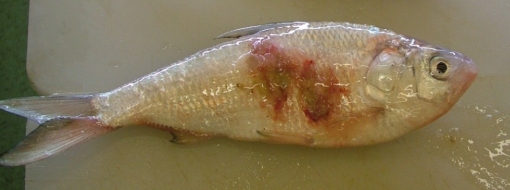The seawater has high amounts of sulphate in it. When it seeps into the soil, bacteria reduce the sulphate to sulphide, which often reacts with iron of the soil. This results in a grey somewhat smelly result. However, its not a problem for the environment. This is because there is a layer of waterlogged soil that blocks oxygen from penetrating the soil layers and stopping any chemical reaction.

If drainage channels are dug out the water barrier is removed the oxygen can then enter the soil and then react with the sulphides. These form sulphur oxides which in turn form acids. Apart from stopping anything from growing in the soil the acid enters waterways which can dissolve concrete structures.

The increasing acid will cause fish to develop ulcers and shellfish shells can quite literally dissolve (bad news for the local oyster industry!)

To rehabilitate the area, the local council backfilled drains or installed weirs to allow lands to be re-flooded. Acid discharges have been reduced and wildlife are returning to affected areas. Below is a shot of the Rossglen rehabilitation before and after. Note the bare soil where nothing would grow on the left photo.


No comments:
Post a Comment